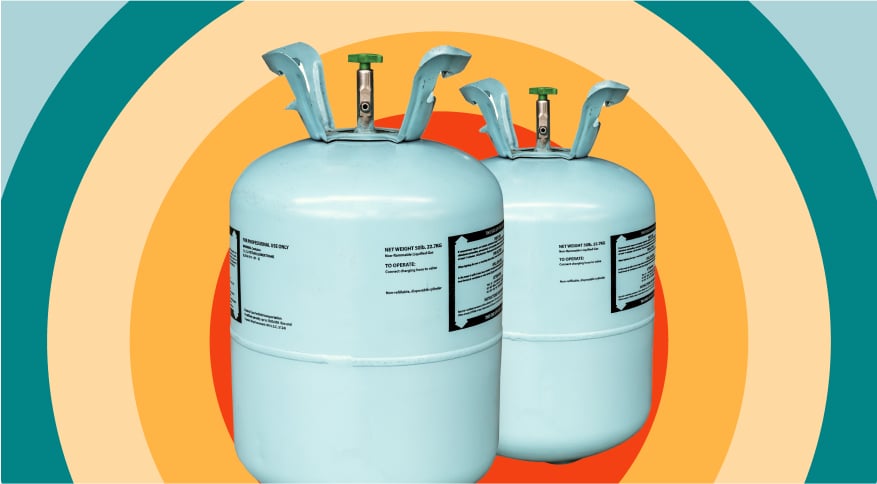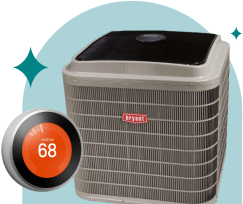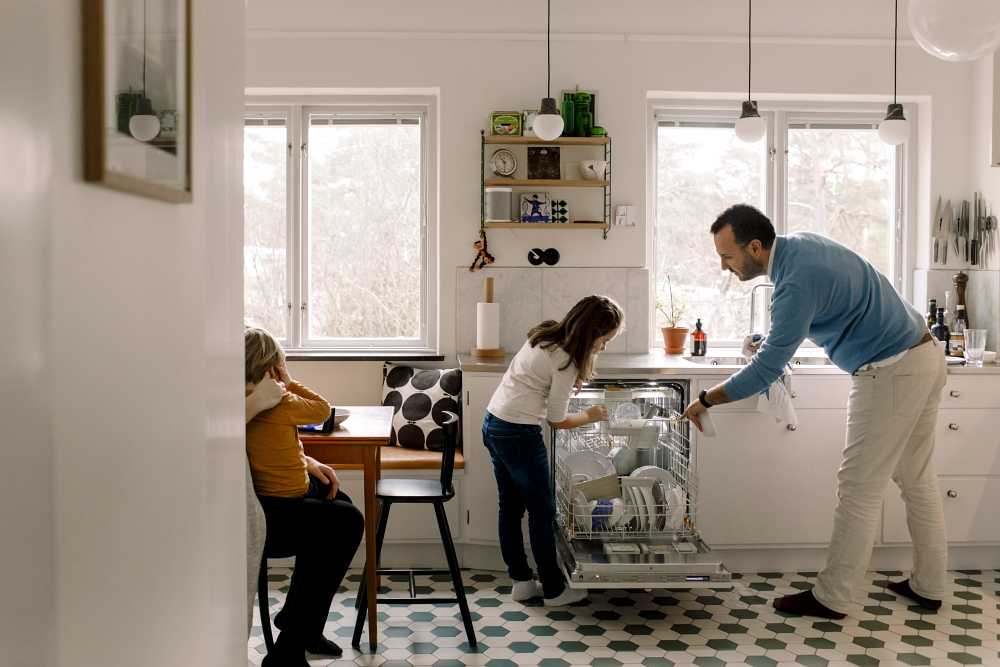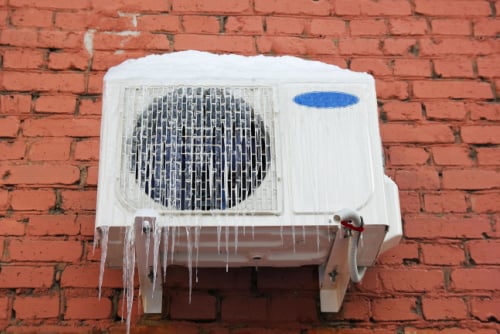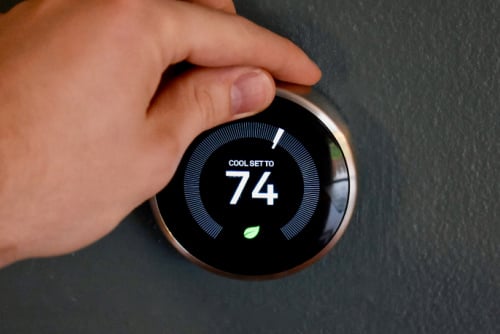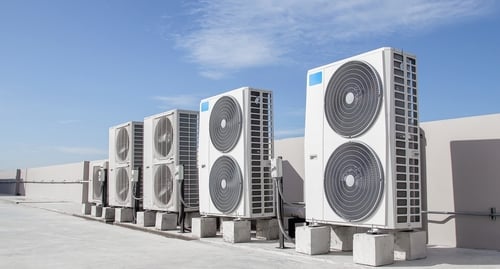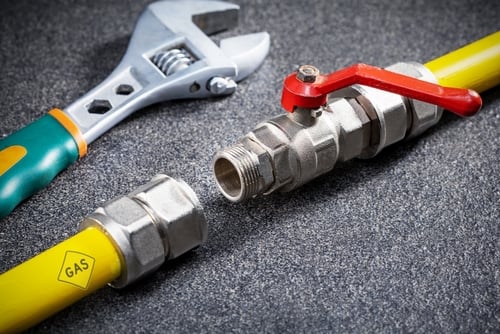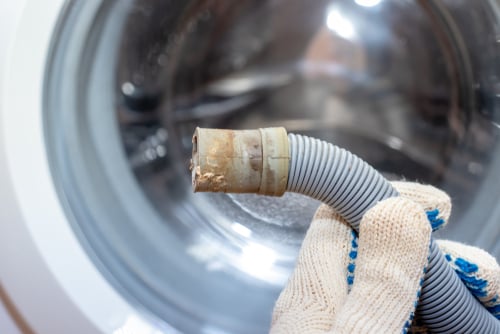Big changes are on the horizon in the HVAC sphere, and it can be confusing to navigate what those mean for you. Starting in 2025, the Environmental Protection Agency (EPA)’s new refrigerant phasedown mandate could impact your HVAC system, particularly if it relies on R-410A.
Any kind of change, especially one involving your home’s comfort, can feel overwhelming. That’s why we’re breaking down everything you need to know about what changes next year for air conditioners, how it might affect your system, and what you can do to prepare.
Understanding the R-410A phasedown
What is R-410A?
R-410A is one of the most commonly used refrigerants in HVAC systems today, responsible for keeping your home cool during summer and cozy during winter. Despite its ubiquity, there’s a catch—R-410A has a high Global Warming Potential (GWP) of 2088.
While it’s been a go-to refrigerant for years, its environmental impact has prompted the EPA to take action. So what changes next year for air conditioners? The goal is to transition to refrigerants that are kinder to the planet. The 2025 refrigerant changes aim to adopt lower-GWP options like R-32 and R-454B, which deliver the same performance with a significantly reduced environmental impact."
Why the R410A phasedown?
The R410A phasedown is part of the EPA’s broader effort to tackle climate change by reducing greenhouse gas emissions. Refrigerants with high GWP contribute to global warming when released into the atmosphere. By limiting the production and use of R-410A, the EPA aims to encourage the adoption of alternatives with less impact on the environment.
These new refrigerant changes are a step in the direction of creating a healthier planet for future generations. While it may feel like another hurdle in homeownership, these new refrigerant changes bring opportunities for more efficient systems, better energy savings, and reduced long-term costs.
Timeline for the phasedown
The new refrigerant changes aren’t happening overnight, but the clock is ticking. Here’s a look at the key dates for the EPA refrigerant changes:
-
2022:
The EPA began reducing the production and importation of high-GWP refrigerants like R-410A.
-
January 1, 2025:
This is the key milestone. As of January 1, 2025, EPA regulations mandate that almost all cooling systems manufactured or installed after this date must use more environmentally friendly refrigerants than R-410A (specifically, refrigerants with less than 700 GWP; whereas R-410A has a high GWP of 2088).
-
By 2036:
The EPA aims to achieve an 85% reduction in the production and consumption of high-GWP refrigerants.
How the phasedown impacts homeowners
Challenges for older HVAC systems
If your HVAC system uses R-410A, you might not notice the effects of the 2025 refrigerant changes immediately. But over time, keeping older systems running could become more difficult as R-410A and parts for R-410A systems becomes less available. With fewer options, the cost of repairs and refills may rise, leaving homeowners with tough decisions about whether to repair or replace their systems.
Homeowners looking to upgrade an older system to increase its cooling capacity may be required to completely replace their system with a low-GWP compliant system. This is because the EPA considers such upgrades equivalent to installing a brand-new system. For homeowners with aging HVAC units, this 2025 refrigerant mandate serves as an opportunity to sit down and weigh your options in order to avoid unexpected disruptions and rising costs.
Pros & Cons of Maintaining an Older System
When Maintenance Makes Sense
- The system is less than 10 years old.
- Repairs are minor and infrequent.
- Energy bills are reasonable, and refrigerant-related issues are unlikely.
When Replacement Is Wiser
- Repair costs exceed 50% of the cost of a new system.
- Energy inefficiency causes excessively high utility bills.
- You qualify for significant rebates or incentives
Transition to newer refrigerants
Transitioning to a compliant refrigerant is one of the simplest ways to adapt to the EPA refrigerant changes. New refrigerants like R-32 and R-454B have a lower Global Warming Potential and are also compatible with advanced HVAC systems that use less energy and are more reliable in the long run.
Making the switch now could save you from future headaches. Modern HVAC systems offer better performance, reduced utility costs, and lower maintenance expenses. Acting early on the refrigerant changes also helps you avoid price spikes and supply shortages that are expected to affect older systems as the phasedown continues. Additionally, upgrading now could help you take advantage of available financing options, making the transition more affordable.
How Frontdoor can help
Expert guidance at your fingertips
Navigating what changes next year for air conditioners can feel overwhelming, but you don’t have to do it alone. With the Frontdoor app, you can connect with HVAC Experts via video chat for personalized advice.
Whether you’re unsure about your system’s compatibility or need help weighing repair vs. replacement options, our Experts are ready to answer your questions. With an average of 18 years in the HVAC industry, our Experts are uniquely positioned to guide you through the process.
Exclusive access to the New HVAC Program
Frontdoor makes it easier than ever to upgrade to an high-performing, energy-efficient system. Through our New HVAC Program, members can take advantage of exclusive pricing on name-brand systems that use low-GWP refrigerants like R-32 and R-454B. The program includes:
- A professional inspection of your current system.
- Recommendations for compliant, energy-efficient units tailored to your needs.
- Transparent quotes and clear terms so you know exactly what to expect.
- Seamless coordination of purchase and installation with trusted contractors.
- The availability of third party financing that makes the price more accessible with lower monthly payments
By leveraging our buying power, Frontdoor members can potentially save thousands compared to national retail pricing, making it a smart move for your wallet and your planet.
Repair or replace? We’ve got you covered
Not ready to replace your system just yet? No problem. Frontdoor helps you extend the life of your current HVAC system with the help of on-demand repair Pros, or through Expert Support through video chat on the Frontdoor App. Plus, you can get started with a DIY HVAC checkup to assess your system’s health. If repair isn’t an option, we’ll work with you to find a replacement that fits your home and budget. If repair isn’t an option, we’ll work with you to find a replacement that fits your home and budget.
Become a Frontdoor member today to gain access to exclusive pricing on eco-friendly HVAC systems, expert advice through video consultations, and support to keep your home running smoothly. With Frontdoor, you can feel confident that you’re making the best decisions for your home, your budget, and the environment every time. Download the app to get started.
FAQs
What does GWP mean, and why is it important?
Global Warming Potential (GWP) measures how much heat a greenhouse gas traps in the atmosphere over a specific period, compared to carbon dioxide (which has a GWP of 1). Lower GWP refrigerants like R-32 and R-454B significantly reduce the environmental impact of HVAC systems. For context:
- R-410A: GWP of 2088
- R-32: GWP of 675
- R-454B: GWP of less than 500
Switching to lower-GWP refrigerants is a critical step in combating climate change.
What is an A2L refrigerant?
A2L is a classification of refrigerants that indicates they are mildly flammable and have low toxicity. These refrigerants strike a balance between performance and environmental impact, making them an ideal choice for modern HVAC systems. Safety systems like leak sensors and dissipation boards ensure they are used securely and efficiently.
What is a detection system and shut-off valve, and how do they work?
Modern HVAC systems designed for A2L refrigerants are equipped with advanced safety measures. These include:
- Leak Sensors: Installed on the indoor coil, these sensors detect refrigerant leaks.
- Dissipation Boards: These systems shut down the HVAC unit when a leak is detected and activate the blower for about 10 minutes to safely disperse any leaked refrigerant. The system must then be manually reset to resume operation.
The new systems do not have a shut off valve for the refrigerant. These features shut the system down so it is not under high pressure, providing an additional layer of protection for operating A2L refrigerants in your home.
What is R-454B?
R-454B is one of the newer refrigerants being introduced as an eco-friendly alternative to R-410A. It’s a blend of two compounds:
- R-32 (Hydrofluorocarbon): Provides high efficiency and low GWP.
- R-1234yf (Hydrofluoroolefin): Offers additional environmental benefits, including zero ozone depletion potential.
R-454B has a GWP of less than 500, making it significantly better for the environment while still delivering effective cooling and heating for homes.
Was this article helpful?

